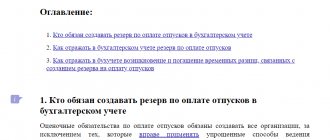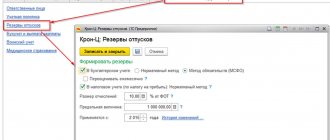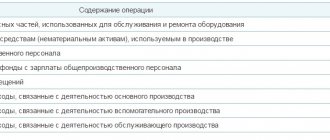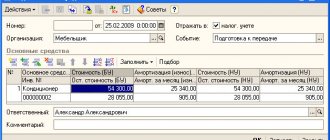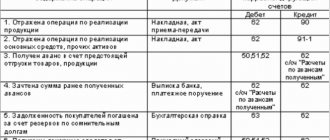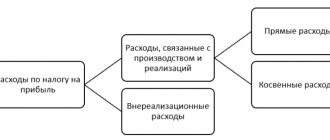How reserves for future expenses are formed
The organization's reserves for future expenses consist of:
- Upcoming costs of paying vacation pay to employees;
- Costs for current repairs of equipment and fixed assets;
- Costs for warranty service and repairs;
- Other expenses of the organization.
An enterprise has the right to independently establish the procedure for calculating the reserve for paying vacation pay to employees, indicating in its accounting policy, taking into account paragraphs 15 and 16 of PBU 8/2010:
When determining the calculation base of the reserve for the repair of fixed assets or equipment, you need to take into account data on the sale of products in the reporting period, the estimated percentage of defects, statistics in the field of warranty repairs, and so on.
Please note that the annual amount of the reserve for guaranteed repairs should not exceed the arithmetic average of the amount of guaranteed repairs actually performed over the previous three years.
Having determined the annual amount of the reserve, you can calculate the amount of monthly deductions: the annual amount is divided by 12. If the amount of the reserve is deducted once a quarter, then the total annual amount is divided by 4.
The amount exceeding the organization's vacation reserve can be written off against current costs. And the balance of the organization’s vacation reserve can be transferred to the next year.
If the reserve for repairs of fixed assets and equipment is not spent in the current year, then the balance can be closed on account 99.01 “Profits and losses from activities with OSNO:
We also note that in the balance sheet the amount of the reserve is reflected in line 1540 “Reserves for future expenses.”
Line 650 “Reserves for future expenses”
Home/ Accounting statements/ Line 650
Line 650 of financial statements
refers to
the balance sheet
up to 2011.
Line 650 “Reserves for future expenses”
This line of the balance sheet reflects the credit balance of account 96 “Reserves for future expenses.” These are reserves created by the organization for the upcoming payment of vacations, for the payment of remunerations at the end of the year, for warranty repairs and maintenance, for the repair of fixed assets, etc. The same account records reserves for contingent facts of economic activity, for discontinued activities (reserve for repayment obligations, for payment of severance pay, etc.).
The reservation of amounts is reflected in the credit of account 96 in correspondence with the accounts for recording production costs (selling expenses - for trading organizations). The expenditure of the created reserve amounts is reflected in the debit of account 96.
The decision to form reserves and (or) to refuse to form reserves must be recorded in the accounting policy.
Please note: the amounts of estimated reserves are not reflected on line 650 of the balance sheet.
Postings to account 96
Typical transaction entries for account 96 “Reserves for future expenses” are shown in the table below:
| Dt accounts | CT account | Posting Contents |
| 96 | 70 | The amount of the reserve for payment of accrued vacation workers is reflected |
| 96 | 69 | The amount of accrued social payments is reflected |
| 96 | 76 | The cost of services from third-party companies written off from the organization's reserves is reflected, for example: warranty repairs, warranty service |
| 96 | 91 | The unused amount of the reserve for future expenses is included in other income |
| 08 | 96 | Reflects the amount of the organization's reserve for investments in non-current assets during construction work |
| 20 (23,29) | 96 | The accrued amount of the reserve is included in the costs of the main production (auxiliary production or service production) |
| 25 (26) | 96 | The accrued amount of the reserve is included in general production or general business expenses. |
| 44 | 96 | The accrued amount of the reserve is included in sales expenses |
Account 96 in accounting
The balance of the accounts for valuation reserves (14 “Reserves for impairment of material assets”, 59 “Reserves for impairment of financial investments”, 63 “Reserves for doubtful debts”) is not reflected as a separate amount in the balance sheet. The balances on them are taken to reduce the corresponding indicators of the balance sheet asset:
- the balance of account 14 reduces the indicators in lines 211 “Raw materials, supplies and other similar assets” and 214 “Finished products and goods for resale”;
- account balance 59 reduces the indicators on lines 140 “Long-term financial investments” and 250 “Short-term financial investments”;
- account balance 63 reduces the indicators on lines 230 and 240 “Accounts receivable”.
The balance of account 82 “Reserve capital” is also not reflected on line 650. Line 430 of Section III of the balance sheet is intended for it.
Examples of transactions on account 96 in accounting
Let us study in more detail examples of transactions on account 96 “Reserves for future expenses”.
Example 1. Creating a reserve for vacation pay based on wages
The accounting policy of Vesna LLC reflects the creation of a reserve for the payment of vacation pay to employees based on wages. In this case, the reserve is accrued at the end of each month.
To calculate the reserve, we use the formula: (OT + insurance premiums) / 28 * 2.33, where
- 28 – the number of vacation days per year for each employee, according to the collective agreement;
- 2.33 – number of vacation days for 1 month worked.
Hence:
- Insurance premiums - 30.2%;
- Salary in January - 250,000 rubles;
- January reserve: (250,000 + 75,500) / 28 * 2.33;
- Vesna LLC created a reserve for vacation pay in January in the amount of RUB 27,086.
Postings for creating a reserve in Vesna LLC for deferred holidays on account 96:
| Dt | CT | Transaction amount, rub. | Wiring Description | A document base |
| 20 | 96 | 27 086 | The amount of the reserve for paying vacation pay to employees is reflected | Accounting information |
Example 2. Creating a reserve for vacation pay based on average earnings
The accounting policy of Zima LLC reflects the creation of a reserve for vacation pay based on average earnings and the number of unused vacation days. The salary of employees for the past 2016 was RUB 2,750,000. The rest of the vacation for 2021 is 30 days. The average number of days per month in 2021 is 29.3 days.
To calculate the reserve, we use the formula: (average daily earnings + insurance premiums) * vacation balance.
Reserve calculation:
- Average daily earnings: 2,750,000 / 29.3 / 12 = 7,821.39 rubles;
- Insurance premiums: 7,821.39 * 30.2% = 2,362.06 rubles;
- Reserve as of December 31, 2021: (7,821.39 + 2,362.06) * 30 = RUB 305,503.50
Zima LLC has generated entries to create a reserve for vacations on account 96:
| Dt | CT | Transaction amount, rub. | Wiring Description | A document base |
| 20 | 96 | 305 503,50 | The amount of the reserve for paying vacation pay to employees is reflected | Accounting information |
Account 96 in accounting: general information
A reserve account is necessary to record funds set aside for the future in order to ensure that they are spent evenly during the reporting period. For example, most employees try to take vacations during the summer; this is a large one-time financial burden for the company. Reserving funds will allow peak months for vacation payments to pass without damaging the organization's current assets.
In relation to balance sheet sections, is account 96 active or passive? He is classified as passive. Receipt of payments to replenish the reserve is reflected as a credit, the amount of expenses from reserves is reflected as a debit. Analytics is carried out for each type of reserve separately. Subaccounts are used for this:
- 96.1 when forming a reserve of funds for payments to vacationers;
- 96.2 when creating a reserve of funds intended for the payment of bonuses for length of service;
- 96.3 regarding repairs and warranty costs;
- 96.4 is provided for all other reserves.
Account 96 in accounting when creating a reserve for payments to vacationers involves the inclusion of estimated amounts for vacations and insurance contributions for these payments. Algorithm of actions:
- Calculation of the total amount of funds required to reserve for the payment of vacation pay. To do this, you need information about the number of employees, the amount of their vacation time, including additional days, and average earnings.
- Calculation of insurance premiums at established rates in relation to the final value of the amount of vacation pay.
- Formation of a reserve in monthly or quarterly installments.
When creating a reserve aimed at covering the costs of repairing fixed assets, on the account. 96 accumulates an amount within the actual cost of repair services performed over the last 3 years in arithmetic average terms. If more funds are included in the reserve than were necessary, they can be transferred to the next year or reversed. If there is a shortage of reserve assets, additional expenses are written off as operating expenses.
Closing 96 accounts
You need to understand that reserve amounts cannot be calculated with absolute accuracy. The salary reserve, for example, may change for reasons such as:
- dismissal of employees;
- salary changes;
- changes in the actual vacation schedule, etc.
If the reserve is exceeded, the amount “on top” is written off against current costs.
If the reserve is not fully spent, it is carried over to the next year or reversed.
For the reserve for OS repairs, the unspent balance can be closed to account 99.1 at the close of the year, if the repairs are not completed in the current year.
Account 96 of accounting is a passive account, Reserves for future expenses, used to summarize information about the reserved amounts of future expenses of the organization. Let's study how to calculate and reflect in the postings the creation of a reserve for paying vacation pay to employees and a reserve for warranty repairs.
The organization's reserves for future expenses consist of:
- Upcoming costs of paying vacation pay to employees;
- Costs for current repairs of equipment and fixed assets;
- Costs for warranty service and repairs;
- Other expenses of the organization.
An enterprise has the right to independently establish the procedure for calculating the reserve for paying vacation pay to employees, indicating in its accounting policy, taking into account paragraphs 15 and 16 of PBU 8/2010:
When determining the calculation base of the reserve for the repair of fixed assets or equipment, you need to take into account data on the sale of products in the reporting period, the estimated percentage of defects, statistics in the field of warranty repairs, and so on.
Please note that the annual amount of the reserve for guaranteed repairs should not exceed the arithmetic average of the amount of guaranteed repairs actually performed over the previous three years.
Having determined the annual amount of the reserve, you can calculate the amount of monthly deductions: the annual amount is divided by 12. If the amount of the reserve is deducted once a quarter, then the total annual amount is divided by 4.
The amount exceeding the organization's vacation reserve can be written off against current costs. And the balance of the organization’s vacation reserve can be transferred to the next year.
If the reserve for repairs of fixed assets and equipment is not spent in the current year, then the balance can be closed on account 99.01 “Profits and losses from activities with OSNO:
We also note that in the balance sheet the amount of the reserve is reflected in line 1540 “Reserves for future expenses.”
Get 267 video lessons on 1C for free:
Account 96 “Reserves for future expenses”
Account 96 “Reserves for future expenses” is intended to summarize information on the status and movement of amounts reserved for the purpose of uniform inclusion of expenses in production costs and sales expenses. In particular, this account may reflect the following amounts:
- upcoming payment of vacations (including payments for social insurance and security) to employees of the organization;
- for the payment of annual remuneration for long service;
- production costs for preparatory work due to the seasonal nature of production;
- for repairs of fixed assets;
- upcoming costs for land reclamation and implementation of other environmental measures;
- for warranty repairs and warranty service.
Reservations of certain amounts are reflected in the credit of account 96 “Reserves for future expenses” in correspondence with the accounts for accounting for production costs and sales expenses.
Actual expenses for which a reserve was previously created are debited to account 96 “Reserves for future expenses” in correspondence, in particular, with accounts: 70 “Settlements with personnel for wages” - for the amount of wages to employees during vacation and annual remuneration for length of service; - the cost of repairs of fixed assets made by a division of the organization, etc.
The correctness of the formation and use of amounts for a particular reserve is periodically (and necessarily at the end of the year) checked according to estimates, calculations, etc.
and adjusted if necessary.
Analytical accounting
under account 96 “Reserves for future expenses”, separate reserves are maintained.
